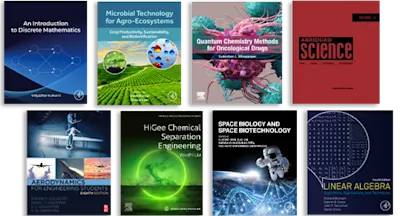
Covid-19: A Critical Care Textbook
- 1st Edition - October 15, 2021
- Latest edition
- Authors: Chris Carter, Joy Notter
- Language: English
With the major redeployment of staff during the Covid-19 pandemic, this authoritative textbook provides a practical resource for healthcare professionals who may be new to acute an… Read more
Purchase options

With the major redeployment of staff during the Covid-19 pandemic, this authoritative textbook provides a practical resource for healthcare professionals who may be new to acute and critical care settings.
Written by nurses for nurses, the book will help readers master patient assessment, non-invasive ventilation, the use of high flow nasal oxygenation and renal care. You will learn about the challenges of resuscitation, leadership and responding to a public health emergency, and effective personal protection and hygiene practices.
Covid-19: Critical Care textbook
has been written by experts with frontline experience of working in hospitals during the pandemic and will remain relevant for those responding to future infectious disease outbreaks or waves of Covid-19.- Self-assessment quizzes to support ongoing learning
- Suitable for staff re-deployed and those already working in acute and critical care areas
- Fully illustrated to demonstrate the use of PPE and coronavirus-specific procedures
- Contributions from key experts who have dealt directly with the disease provide practical insights
Experienced critical care nurses and those who have being re-deployed to work in critical care (17,900 critical care nurses in UK at 2018: source CC3N workforce survey report 2018).
Introduction
COVID-19: a critical care perspectives
COVID-19: Assessment of a Critically Ill Patient
COVID-19: Non-Invasive Ventilation
COVID-19: Invasive Ventilation
COVID-19: Weaning from mechanical ventilation & Tracheostomy Care
COVID-19: Renal Care
COVID-19: Advanced Life Support
Severe COVID-19 disease in pregnancy
COVID-19: Professional and Legal Issues
COVID-19 in a resource limited environment
Severe COVID-19 Case Study
COVID-19 Lessons learnt
Glossary of Terms.
"The authors emphasize innovative and sustainable commonalities in nursing practice that transcend global borders. This book will help readers understand unique aspects of a global pandemic, the pathophysiology of the disease, and issues in the delivery of care."
-© Doody’s Review Service, 2022, Patricia Gonce Morton, PhD, RN, ACNP-BC, FAAN (University of Utah College of Nursing) Score: 98 - 5 Stars!
- Edition: 1
- Latest edition
- Published: October 15, 2021
- Language: English
CC
Chris Carter
JN